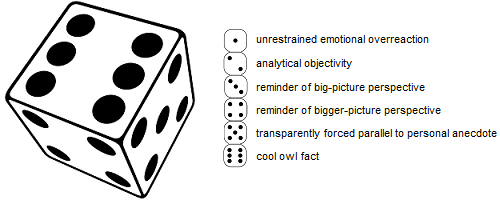How to Roll a Die: A Guide to Dice Etiquette
Dice are small, throwable objects with marked sides that can generate random numbers, commonly used in games of chance and strategy. Dice have a long and fascinating history, dating back to ancient times and civilizations. Dice can also be used for various mathematical and statistical purposes, such as calculating probabilities and outcomes. In this article, I will show you how to roll a die, or multiple dice, and explain some basic dice etiquette.
How to roll a die
Rolling a die is a simple but important skill that can affect the outcome of your game. Whether you are playing a board game, a role-playing game, or a gambling game, you want to make sure that your dice rolls are fair, random, and clear. Here are some steps and tips for rolling a die:
Single die
- Pick up the die with your thumb and index finger. Make sure that you can see all the sides of the die.
- Shake the die in your hand or in a dice cup for a few seconds. This will help to randomize the result.
- Throw the die onto a flat and smooth surface, such as a table or a tray. Avoid throwing the die too hard or too softly, as this might affect the roll.
- Let the die bounce or roll until it comes to a complete stop. Do not touch or move the die until then.
- Read the result from the top face of the die. The top face is the one that is perpendicular to the surface. If the die is tilted or leaning on another object, reroll it.
Multiple dice
- Pick up the dice with your hand or in a dice cup. Make sure that you can see all the sides of each die.
- Shake the dice in your hand or in a dice cup for a few seconds. This will help to randomize the results.
- Throw the dice onto a flat and smooth surface, such as a table or a tray. Avoid throwing the dice too hard or too softly, as this might affect the rolls.
- Let the dice bounce or roll until they come to a complete stop. Do not touch or move the dice until then.
- Read the results from the top faces of each die. The top face is the one that is perpendicular to the surface. If any of the dice are tilted or leaning on another object, reroll them.
Dice etiquette
Dice etiquette is a set of rules and guidelines that help to ensure fair play and respect for dice and other players. Dice etiquette can vary depending on the type of dice, game, and situation, but there are some general rules that apply to most cases. Here are some examples of dice etiquette:
General rules
- Always use clean and undamaged dice. Dirty or damaged dice can affect the rolls and cause disputes.
- Always use appropriate dice for your game. Different games may require different types of dice, such as six-sided, eight-sided, ten-sided, etc. Using the wrong dice can affect the gameplay and fairness.
- Always roll the dice in front of everyone. Rolling the dice behind a screen, under a cup, or in your hand can raise suspicion and mistrust.
- Always announce your results clearly and honestly. Do not lie or cheat about your rolls, as this can ruin the fun and integrity of the game.
- Always respect the dice and other players. Do not throw the dice at someone, steal someone else’s dice, or mock someone’s rolls. Be gracious and courteous, whether you win or lose.
<li
Specific rules
- For games that use multiple dice of the same type, such as Yahtzee or Craps, use dice that are identical in size, shape, color, and markings. This will help to avoid confusion and bias.
- For games that use multiple dice of different types, such as Dungeons & Dragons or GURPS, use dice that are distinct in size, shape, color, and markings. This will help to identify which die is which and what it represents.
- For games that use special dice, such as Fudge or Fate, follow the rules and conventions of the game system. For example, Fudge dice have two sides marked with a plus sign (+), two sides marked with a minus sign (-), and two sides blank. Fate dice are similar, but have one side marked with a zero (0) instead of a blank.
Conclusion
Dice are an essential part of many games and activities that involve chance, strategy, and fun. Knowing how to roll a die properly and following some basic dice etiquette can enhance your gaming experience and make it more enjoyable for everyone. Here are some examples of dice games that you can try:
- Monopoly: A classic board game that uses two six-sided dice to move around the board and buy properties.
- Risk: A strategic board game that uses six-sided dice to resolve battles and conquer territories.
- Boggle: A word game that uses 16 six-sided dice with letters on them to form words in a grid.
- Liar’s Dice: A bluffing game that uses five six-sided dice per player and a cup to hide them.
- Balut: A dice game that originated in the Philippines and is similar to Yahtzee, but with more categories and scoring options.
FAQs
- What is the probability of rolling a certain number on a die?
- What is the difference between fair and unfair dice?
- What are some ways to check if a die is fair or unfair?
- What are some terms related to dice?
- Ace: A term for rolling a 1 on a die.
- Boxcars: A term for rolling two 6s on two six-sided dice.
- Crit: A term for rolling the highest possible number on a die, usually resulting in a special effect or bonus.
- Fumble:
- Fumble: A term for rolling the lowest possible number on a die, usually resulting in a negative effect or penalty.
- Nat: A term for rolling a natural number on a die, meaning without any modifiers or adjustments.
- Snake eyes: A term for rolling two 1s on two six-sided dice.
- What are some types of dice?
- Six-sided dice (d6): The most familiar and widely used type of dice, with numbers from 1 to 6 on each face.
- Four-sided dice (d4): Dice that have four triangular faces, with numbers from 1 to 4 on each vertex.
- Eight-sided dice (d8): Dice that have eight triangular faces, with numbers from 1 to 8 on each face.
- Ten-sided dice (d10): Dice that have ten kite-shaped faces, with numbers from 0 to 9 or 1 to 10 on each face.
- Twelve-sided dice (d12): Dice that have twelve pentagonal faces, with numbers from 1 to 12 on each face.
- Twenty-sided dice (d20): Dice that have twenty triangular faces, with numbers from 1 to 20 on each face.
The probability of rolling a certain number on a die depends on the number of sides on the die. For example, on a six-sided die, the probability of rolling any number from 1 to 6 is 1/6 or 16.67%. On a ten-sided die, the probability of rolling any number from 1 to 10 is 1/10 or 10%. To calculate the probability of rolling a certain number on a die, divide 1 by the number of sides on the die.
Fair dice are dice that have equal chances of landing on any side when rolled. Unfair dice are dice that have unequal chances of landing on certain sides when rolled. Unfair dice can be made by altering the shape, weight, or markings of the dice. For example, a loaded die is an unfair die that has more weight on one side than the others, making it more likely to land on that side.
There are some ways to check if a die is fair or unfair by inspecting it visually or testing it experimentally. Visually, you can look for any signs of damage, wear, or tampering on the die. You can also compare it with another die of the same type and see if they are identical in size, shape, color, and markings. Experimentally, you can roll the die many times and record the results. You can then calculate the frequency and percentage of each outcome and see if they match the expected probability. If there is a significant deviation from the expected probability, the die may be unfair.
There are some terms related to dice that you may encounter in different games and contexts. Here are some examples:
There are many types of dice that vary in shape, size, color, and markings. Some of the most common types of dice are:
I hope you enjoyed this article and learned something new about dice and how to roll them. Dice are fun and versatile objects that can add excitement and challenge to your games and activities. Remember to follow the steps and tips for rolling a die and the rules of dice etiquette to make the most of your dice experience. Happy rolling!
bc1a9a207d


